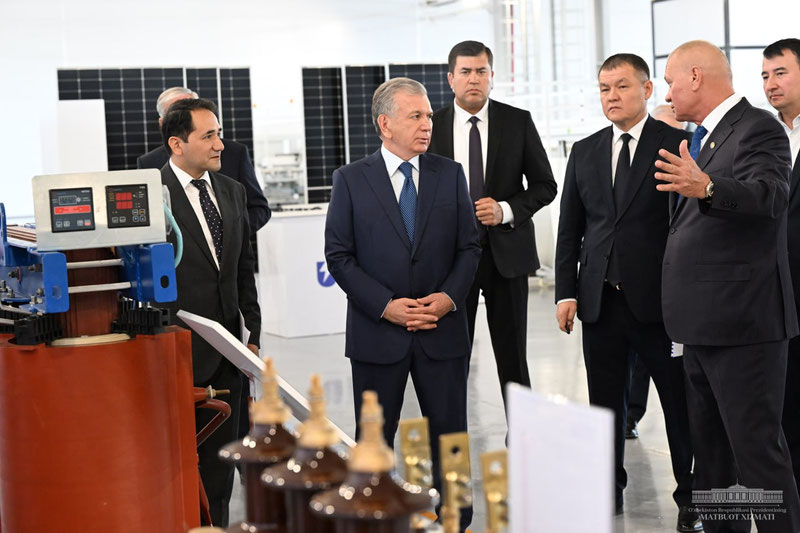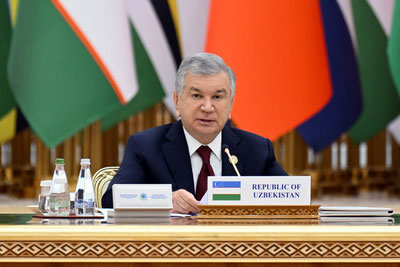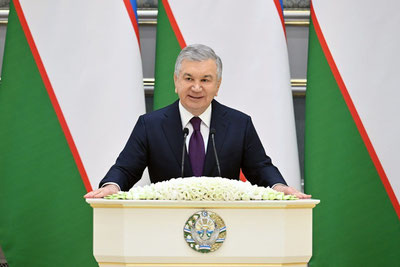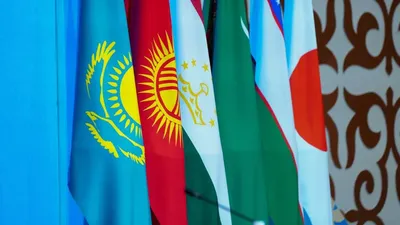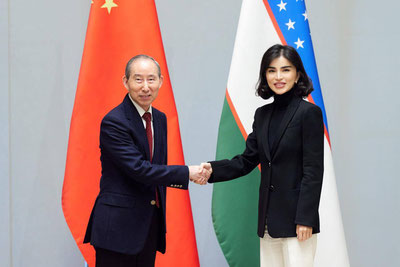President Shavkat Mirziyoyev began his visit to the Republic of Karakalpakstan by familiarizing himself with its industrial potential. The President's press service reported this.
 The “Nukus Electroapparat” joint venture was launched in 2017, specializing in the production of high-voltage equipment for the electrical network. A project to manufacture solar panels was launched in June this year with an investment exceeding $10 million. The equipment was brought in from the Republic of Korea and installed. The production process is fully automated. The project's annual capacity is 273,000 units.
The “Nukus Electroapparat” joint venture was launched in 2017, specializing in the production of high-voltage equipment for the electrical network. A project to manufacture solar panels was launched in June this year with an investment exceeding $10 million. The equipment was brought in from the Republic of Korea and installed. The production process is fully automated. The project's annual capacity is 273,000 units.

This will aid in the use of alternative energy in our country. To date, solar panels with a capacity of 600 megawatts have been installed in various facilities and homes. This will continue.
 The joint venture has not only met the high demand in the local market but also has the potential for $4 million in exports. Seventy people have been employed.
The joint venture has not only met the high demand in the local market but also has the potential for $4 million in exports. Seventy people have been employed.
The head of our state reviewed the work process and conversed with staff members. Officials were given directions to increase such enterprises and to produce products in high demand in the market.
 Products manufactured by sector enterprises were exhibited there.
Products manufactured by sector enterprises were exhibited there.
Solar panels with a capacity of 125 kilowatts have also been installed at the factory itself. The electricity generated is used for internal needs, with the surplus sold to the regional power grid.
 In recent years, our country has launched 10 solar and wind stations with a total capacity of 2.6 gigawatts, funded by $2 billion in investments. Additionally, work is underway on 32 "green" projects with a total value of $19 billion and a combined capacity of 18.6 gigawatts. Overall, the aim is to increase the share of renewable energy in the energy balance to 40 percent by 2030.
In recent years, our country has launched 10 solar and wind stations with a total capacity of 2.6 gigawatts, funded by $2 billion in investments. Additionally, work is underway on 32 "green" projects with a total value of $19 billion and a combined capacity of 18.6 gigawatts. Overall, the aim is to increase the share of renewable energy in the energy balance to 40 percent by 2030.
